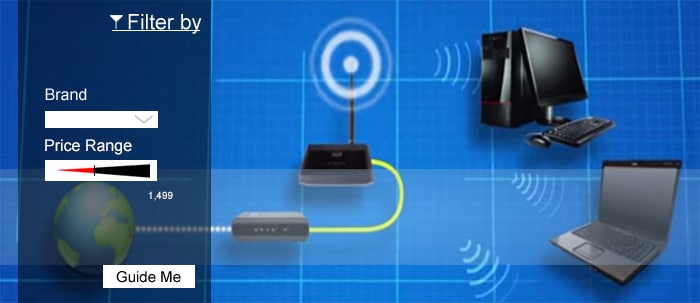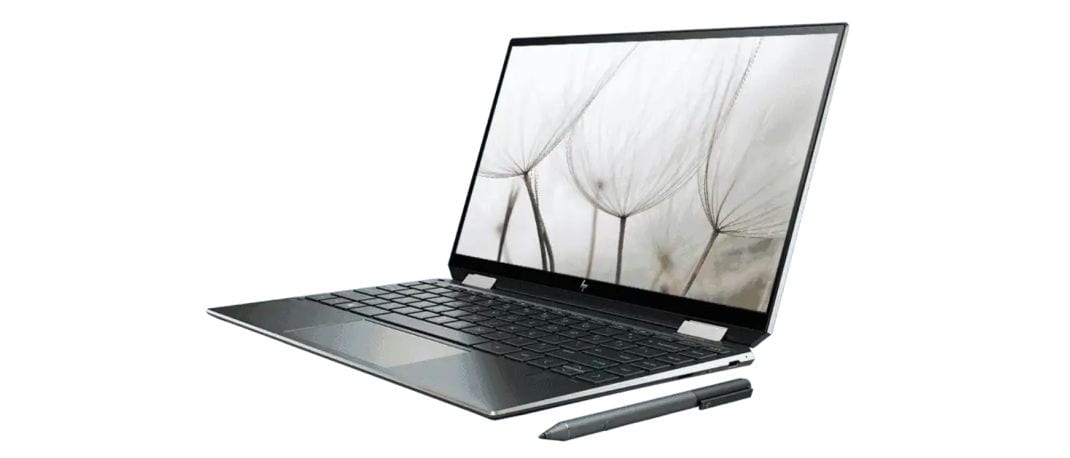As technology evolves, most of the devices we use at home today turn wireless. We have computers, tablets, smartphones and even TVs, that share the same internet connection. Most of these devices need to interact with each other and the internet, using a router. Wireless routers not only let you connect multiple devices to the network, but also eliminate the use of cables and give you the freedom to move about. Buying a router isn’t easy though. There are many aspects that you need consider before you buy the right router. In an attempt to make this buying decision easy for you, we have compiled a list of important features you should look for in a router.
What kind of router do you need – ADSL or a standard WiFi Router?
 If your ISP such as MTNL or BSNL uses a telephone line (RJ11 port) to provide internet service, you are very likely to be using an ADSL modem, which in turn needs to be connected to a WiFi router. This increases number of devices on your desk. In such cases, we recommend simply purchasing an ADSL WiFi router which eliminates the need for a separate ADSL modem.
If your ISP such as MTNL or BSNL uses a telephone line (RJ11 port) to provide internet service, you are very likely to be using an ADSL modem, which in turn needs to be connected to a WiFi router. This increases number of devices on your desk. In such cases, we recommend simply purchasing an ADSL WiFi router which eliminates the need for a separate ADSL modem.
What are dual-band and single-band routers?
 One term you’re going to come across while shopping for routers is something called IEEE 802.11 which is the technical abbreviation used to describe Wi-Fi technology. Most routers are based on the 802.11n standard, which is the popularly used variation of this technology. Routers using this standard, support theoretical wireless speeds that can range from 150Mbps to 900Mbps. These models may also be called N150, N300, N600 and N900, to resemble the speeds offered. Note that these speeds have nothing to do with your internet speeds. Those speeds depend completely on your ISP (internet service provider). The speeds that these routers offer are useful for transferring and streaming data between devices connected to the router. N150 and N300 routers are usually sufficient for basic use, such as internet browsing and some media streaming. On the other hand, streaming HD content and sharing large amounts of data over the network are better done on N600 and N900 class routers. These type of routers usually need something called dual-band support to function, which also means that you need devices that support it as well.
One term you’re going to come across while shopping for routers is something called IEEE 802.11 which is the technical abbreviation used to describe Wi-Fi technology. Most routers are based on the 802.11n standard, which is the popularly used variation of this technology. Routers using this standard, support theoretical wireless speeds that can range from 150Mbps to 900Mbps. These models may also be called N150, N300, N600 and N900, to resemble the speeds offered. Note that these speeds have nothing to do with your internet speeds. Those speeds depend completely on your ISP (internet service provider). The speeds that these routers offer are useful for transferring and streaming data between devices connected to the router. N150 and N300 routers are usually sufficient for basic use, such as internet browsing and some media streaming. On the other hand, streaming HD content and sharing large amounts of data over the network are better done on N600 and N900 class routers. These type of routers usually need something called dual-band support to function, which also means that you need devices that support it as well.
Faster 802.11ac routers
 Apart from the 802.11n, there is an upcoming standard called 802.11ac which claims to offer higher speeds than the 802.11n, beyond 1Gbps. As it’s an upcoming technology, not many devices support it. Market leaders like Apple and Samsung have already started rolling out devices that support 802.11ac. This number is only going to increase in the future. The cheapest 802.11ac routers today are available for as little as Rs. 4,000.
Apart from the 802.11n, there is an upcoming standard called 802.11ac which claims to offer higher speeds than the 802.11n, beyond 1Gbps. As it’s an upcoming technology, not many devices support it. Market leaders like Apple and Samsung have already started rolling out devices that support 802.11ac. This number is only going to increase in the future. The cheapest 802.11ac routers today are available for as little as Rs. 4,000.
Why do you need to get a router with IPv6 address?
IPv6 is the latest version of the Internet protocol that we all use unknowingly when our devices connect to the internet. IPv6 is said to replace IPv4 soon, mostly because 98% of devices connected to the internet, have an IP address assigned by IPv4. Due to the limited number of IP addresses available in IPv4, it’s difficult to assign new IP addresses to the constantly growing number of devices connecting to the internet. In order to tackle this problem, IPv6 will be implemented across the world when the time arrives. To be able to setup a network that is IPv6 compatible, you need a router that supports it as well. That way, you won’t need to buy yet another router when the transition to IPv6 takes place.
Bandwidth controlling capability
 Having a router at home means that you are going to multiple devices connected to the internet at the same time. Some activities such as streaming of media over the internet are going to takemore bandwidth than browsing text sites, for example. There are some routers which let users adjust the priority so that certain applications and services are given more bandwidth. Some routers also allow you to customize these features to a larger extent. Along with devices, you can also determine and allocate the bandwidth to a certain device in a given time schedule.
Having a router at home means that you are going to multiple devices connected to the internet at the same time. Some activities such as streaming of media over the internet are going to takemore bandwidth than browsing text sites, for example. There are some routers which let users adjust the priority so that certain applications and services are given more bandwidth. Some routers also allow you to customize these features to a larger extent. Along with devices, you can also determine and allocate the bandwidth to a certain device in a given time schedule.
Availability of USB ports
 USB ports are present on almost every device we use these days, including routers. The biggest use of the USB port on the router is to share data from a USB drive with other devices on the network. Some routers even allow 3G data dongles to be connected so you can share them with others connected to that router. The USB port on some routers can also be used to share a printer and take printouts from devices in that network. USB ports on some high end routers can also be used to convert other USB devices such as web cameras into network devices, which can again be used by devices connected to the network.
USB ports are present on almost every device we use these days, including routers. The biggest use of the USB port on the router is to share data from a USB drive with other devices on the network. Some routers even allow 3G data dongles to be connected so you can share them with others connected to that router. The USB port on some routers can also be used to share a printer and take printouts from devices in that network. USB ports on some high end routers can also be used to convert other USB devices such as web cameras into network devices, which can again be used by devices connected to the network.
Gigabit Ethernet ports
 Few routers have also started featuring Gigabit (1000Mbps) Ethernet ports on them. These ports offer ten times the data transfer speeds than a conventional 100Mbps connection. To get the 1000Mbps speeds, remember that you need to have other Gigabit compatible wired devices, connected to the router via a CAT6 or CAT5e cable.
Few routers have also started featuring Gigabit (1000Mbps) Ethernet ports on them. These ports offer ten times the data transfer speeds than a conventional 100Mbps connection. To get the 1000Mbps speeds, remember that you need to have other Gigabit compatible wired devices, connected to the router via a CAT6 or CAT5e cable.
Remote management
 Remote management as the name suggests is a feature that lets you to manage and change the settings on the router, even when you’re not on the same network. You can also monitor the usage and statistics remotely from using a smartphone, tablet or PC form anywhere in the world. Some might even let you access the data on the storage drives connected to the router using the USB port.
Remote management as the name suggests is a feature that lets you to manage and change the settings on the router, even when you’re not on the same network. You can also monitor the usage and statistics remotely from using a smartphone, tablet or PC form anywhere in the world. Some might even let you access the data on the storage drives connected to the router using the USB port.
Setting limitations and permissions for internet access
Parental control lets parents keep a close eye on the internet usage habits of their children. They can monitor sites their kids go on and block the sites they don’t want them to visit, in their absence. This of course, can be used by anyone. They can also monitor the sites they visit from their personal devices such as a smartphone. These limitations and permissions can also be setup along with time schedule where internet access is only allowed for a limited period of the day.
Support for BitTorrent
If you like downloading content, you should definitely go in for a router that supports BitTorrent. These routers help you to download data from the internet without the use of a computer. This means that you do not need to keep a PC or laptop running at home all the time. You can also monitor and control downloads remotely if needed. The files downloaded get saved on the USB drive that you keep connected to the router. Some routers also support NZB which is another popular method of downloading files. Just like Windows file sharing, some routers may also allow you to create a FTP server using which others can download data shared by you. So there you have it, some features you should look out for before buying a router. We hope this article was able to help you understand routers a little better. If you still have any doubts regarding a certain router or a feature, you can always walk in to our stores for more information. Our helpful ResQ executives will be happy to help you out.



